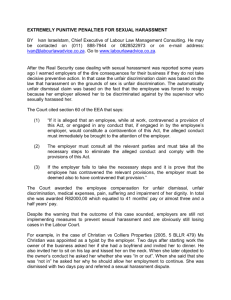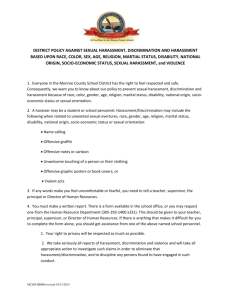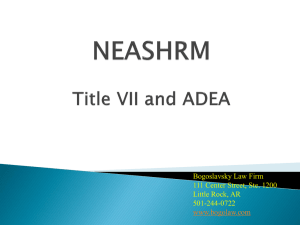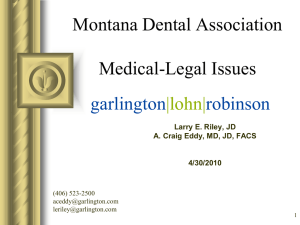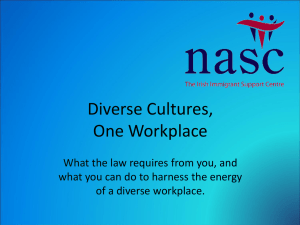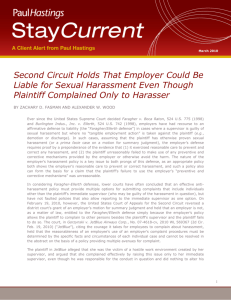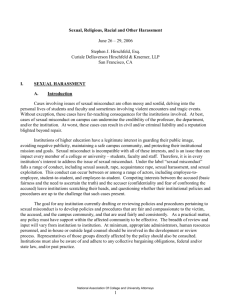180-Class-4-Employment
advertisement
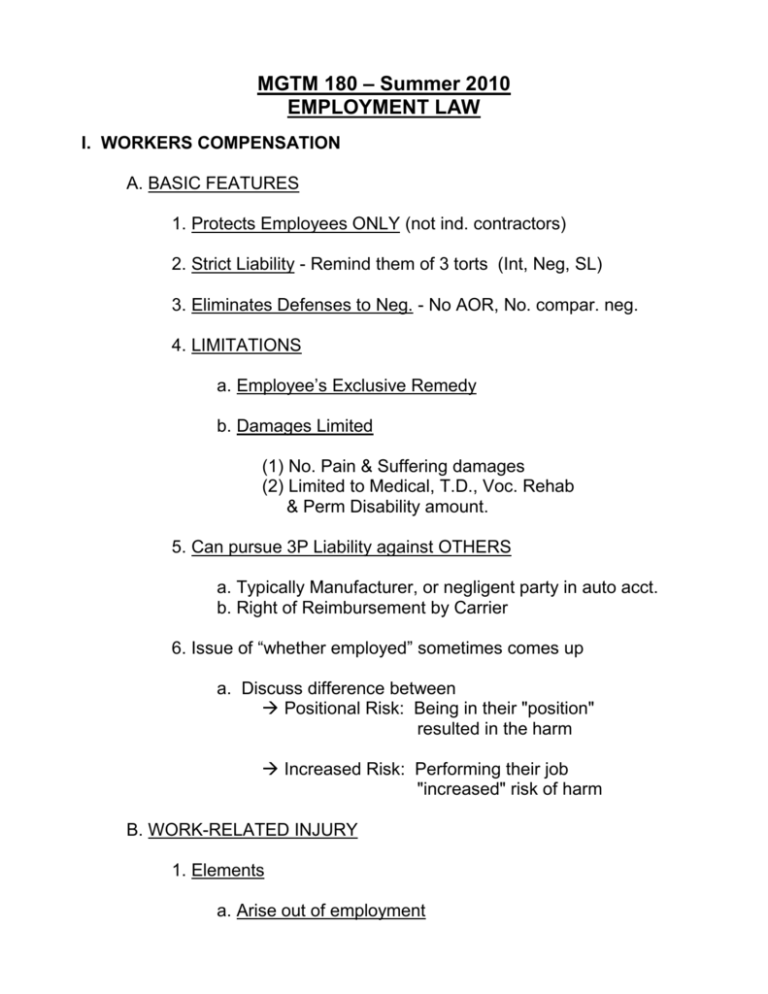
MGTM 180 – Summer 2010 EMPLOYMENT LAW I. WORKERS COMPENSATION A. BASIC FEATURES 1. Protects Employees ONLY (not ind. contractors) 2. Strict Liability - Remind them of 3 torts (Int, Neg, SL) 3. Eliminates Defenses to Neg. - No AOR, No. compar. neg. 4. LIMITATIONS a. Employee’s Exclusive Remedy b. Damages Limited (1) No. Pain & Suffering damages (2) Limited to Medical, T.D., Voc. Rehab & Perm Disability amount. 5. Can pursue 3P Liability against OTHERS a. Typically Manufacturer, or negligent party in auto acct. b. Right of Reimbursement by Carrier 6. Issue of “whether employed” sometimes comes up a. Discuss difference between Positional Risk: Being in their "position" resulted in the harm Increased Risk: Performing their job "increased" risk of harm B. WORK-RELATED INJURY 1. Elements a. Arise out of employment b. Course & scope of employment 2. Coming & Going Rule a. Not “on the job” b. But there is liability if still on premises II. WRONGFUL DISCHARGE A. At-Will Doctrine: What is it? 1. Either side can terminate employment if for an indefinite period of time. 2. Exceptions: a. Contract Provides for Long Term Employment c. Discrimination (age, gender, disab., race, religious, etc.) c. Wrongful Discharge – Tort/contract theories B. Wrongful Discharge - 3 Areas 1. Public Policy Exception: a. Examples of PUBLIC POLICY: (1) Refusal to commit UNLAWFUL ACT (2) PUBLIC OBLIGATION (e.g. Whistle-blowing) (3)EXERCISE LEGAL RIGHT (e.g. work comp claim) 2. Promises by Employers (based on Contract Law) a. Either by Contract or by statements of employer b. Explain CALIFORNIA HISTORY: (1) Based on Promises, must show.... (a) Contract or promise (b) Expectation of Long-term Employment (2) Damages: Only Contract damages (no emotional distress unless a violation of public policy) III. DISCRIMINATION & SEXUAL HARASSMENT A. DISCRIMINATION 1. Federal = CRA of 1964 2. California = FEHA 3. Types of Discrimination: a. Disparate-treatment (Intentional): Plaintiff must show… (1) Member of protected class (2) Qualified for the job (3) Rejected (4) Employer continued to look for other people (5) PRIMA FACIE CASE: Burden shifts to Defendant b. Disparate-Impact – Established job requirements have the effect of discriminating (e.g. height restrictions, educational requirements, etc.) (1) PRIMA FACIE CASE: Plaintiff can establish by showing that the job requirement and the discriminatory effect have the connection. (2) 4/5 test established. If an examination or other requirement has the effect of failing or rejecting 80% of minority or protected class applicants = Disparateimpact discrimination. B. SEXUAL HARASSMENT: 1. Prohibited by State and Federal discrimination statutes. 2. Types of Sexual Harassment: a. Quid Pro Quo: Sexual favors tied to promotion or hiring. b. Hostile Environment: Harassment, abuse severe enough to alter the work environment. 3. Supervisors: Federal Standard… a. Old Standard: Required knowledge by employer for employer to be liable for harassment. b. Faragher case – Employer can be liable EVEN if no knowledge. SEXUAL HARASSMENT in California Under FEHA section 12940(h)(1), harassment of an employee by an employee other than an agent or supervisor is unlawful only if the employer knows or should have known of the harassment and fails to intervene. Employer must take action reasonably calculated to end harassment and it must be disciplinary in nature (by statute) Counseling qualifies only as a first resort – once harassment occurs again, counseling in considered insufficient action by the employer (Intlekofer v. Turnage, 973 F.2d 773) (1992) The FEHA imposes strict employer liability under section 12940(h)(1), however, for harassment by a supervisory employee regardless of whether the employer knows or should have known of the harassment and fails to intervene. (Kelly-Zurian v. Wohl Shoe Company, 22 Cal. App. 4th 397, 415) (1994) Employer is liable if plaintiff establishes that harasser was a supervisor and in fact harassed them Two forms of harassment: (1) conditioning employment term upon submission to unwanted sexual advances (“quid pro quo” harassment) and (2) creating a hostile work environment (requires that defendant’s conduct interferes with plaintiff’s work performance and that plaintiff is actually offended both evaluated by totality of the circumstances Harassment need not occur at work place but can occur elsewhere during a work-related event (Doe v. Capital Cities, 50 Cal. App. 4th 1038) (1996)
